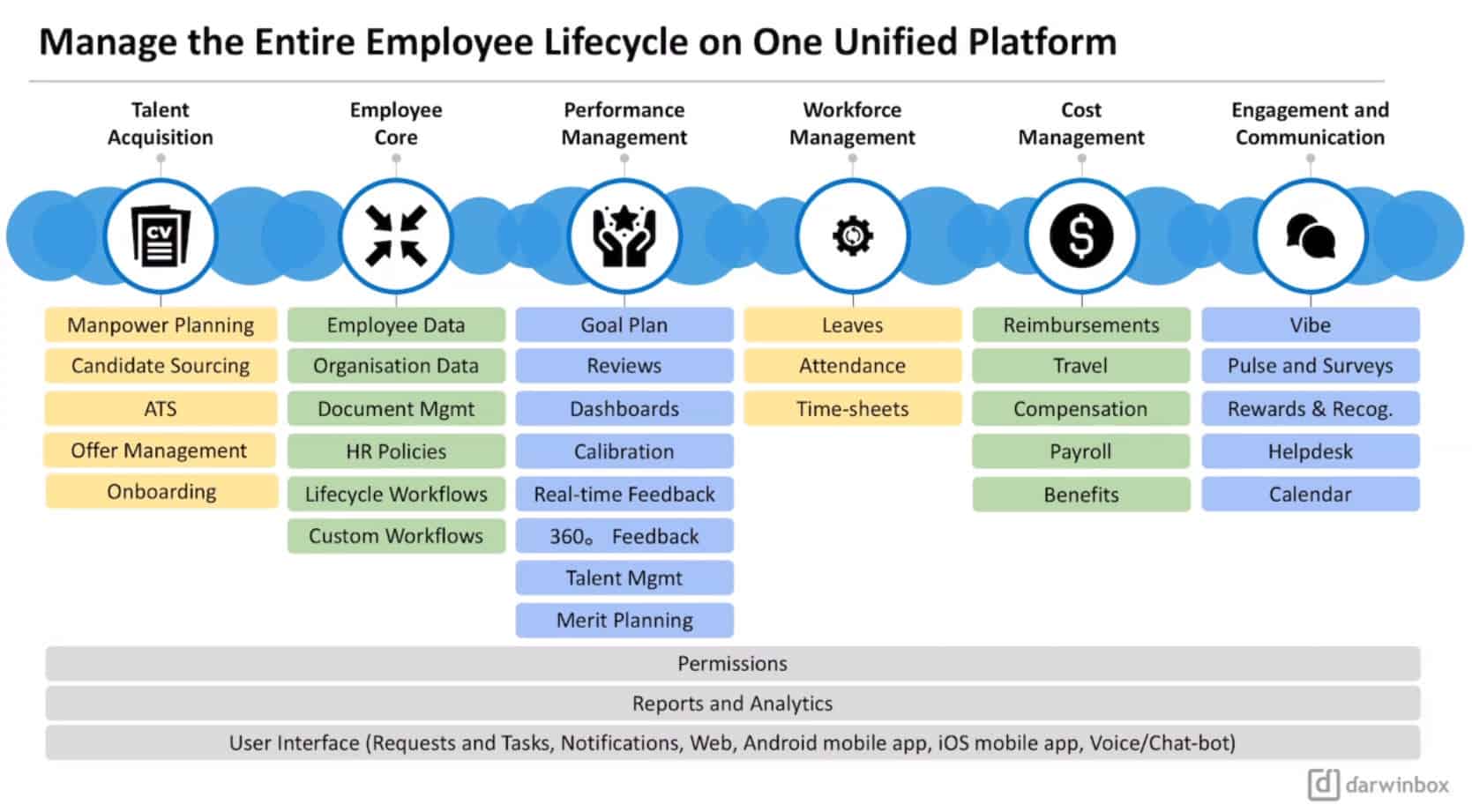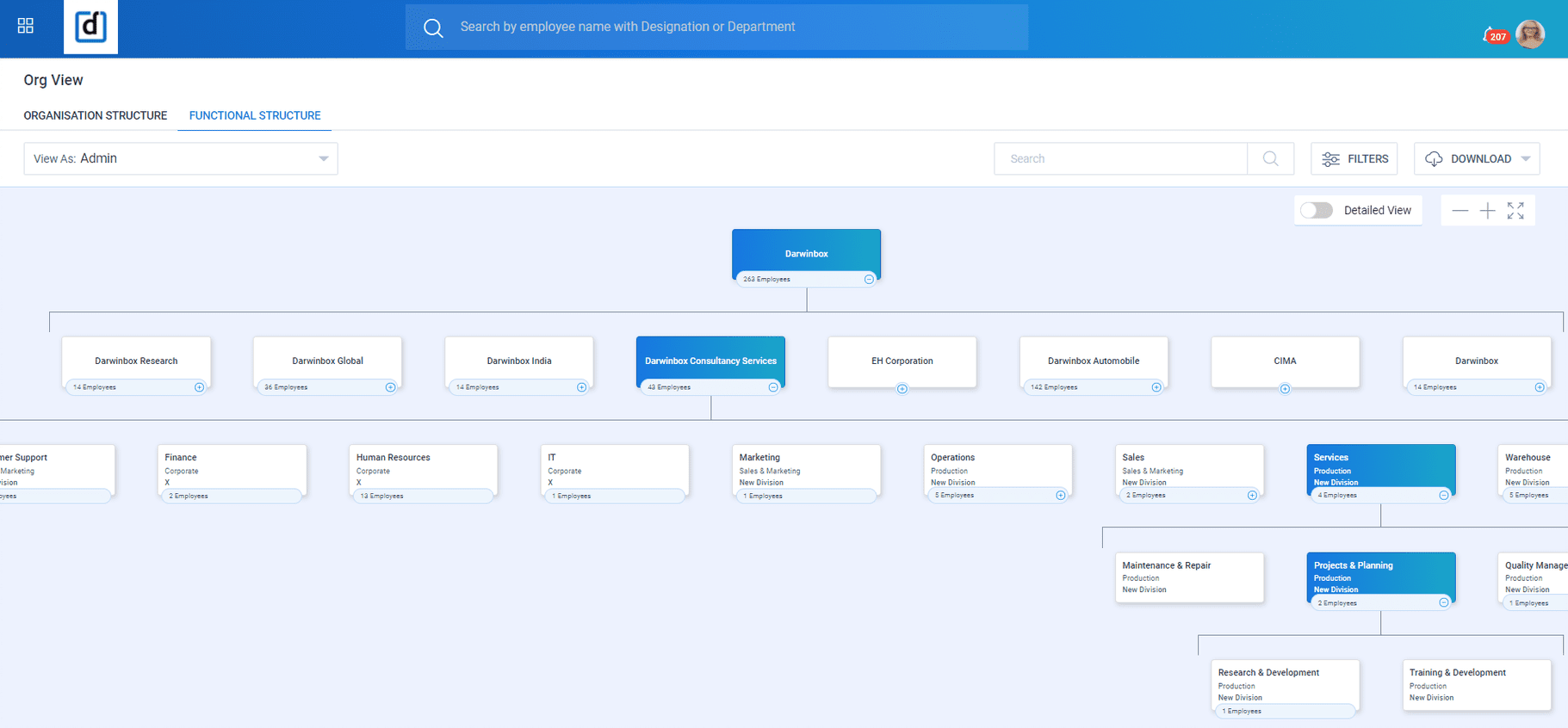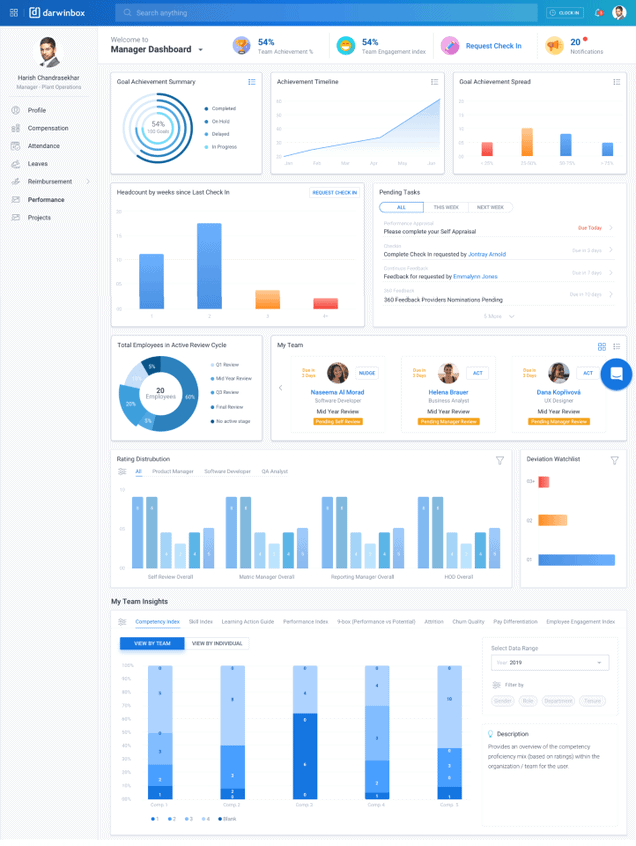Could Darwinbox Become The Next Workday?
This month Darwinbox, an HR Tech company you probably haven’t heard of, received $72 Million in funding at a billion-dollar valuation. And while the company is still relatively new (founded in 2015), it may be the “next Workday” I’ve been searching for over the last few years.
First, a little history.
Workday, as many know, built its business on its next-generation architecture. As Workday describes it, the platform was “built for the cloud” with its own object-oriented database, integrated workflow engine, enterprise security model, in-memory analytics, and a new and innovative user interface. In 2008, when the product was launched, it totally transformed the market.
Since then, Oracle, SAP, ADP, and other vendors have been trying to respond. And when you have an architectural advantage (as Snowflake has proven in data management and Sybase proved in database), it takes a while for competitors to catch up.
When Workday was founded (2005), SaaS platforms were on-premise systems hosted on the internet. Vendors lashed together their licensed software and “ran it for customers” like the old IBM service bureau. The idea of a product “engineered for the cloud” was pioneered by companies like Google and Facebook, not by enterprise software companies.
Since then, of course, cloud architecture has gone everywhere. Nearly every new enterprise software system is built on GCP, AWS, or Azure. They use virtualization, containers, and multi-cloud architectures. And they all try to sell an “Integrated platform” with APIs to connect to other systems.
Workday has not been standing still: The company understands the importance of architecture and has implemented graph database features. The system has publicly documented APIs and a new set of developer tools (under the brand Workday Extend). And the underlying system is both micro-service oriented and mobile-first.
But the HCM (human capital management) systems business is demanding, and it has been hard for vendors to keep up. For one thing, the hierarchical design of employee systems is getting old, because it gets in the way of frequent reorganizations, mergers, and agile operating models. Second, these systems were not designed as employee-first applications, so custom journeys, configurable portals, and chatbots are added on. Third, and perhaps most important of all, most cloud-based HCM systems are designed to be configured by consultants, not HR people, so they’re very hard to change.
How do I know these are issues? We talk with clients about this every day. Companies are buying ServiceNow, Microsoft Viva, Eightfold, Applaud, and other employee experience systems as fast as they can. And many companies now look at their existing HCM system and realize “it’s time to re-implement the entire job architecture because our business has changed.” While this is not a surprise, it does leave one to think, could there be a better way? What if there was an HCM system that was “architected for change?”
(Read my latest article on “How to Build A Skills Strategy” for more on this topic.)
This is essentially what Darwinbox has built. (I also wrote about ADP Lifion which is similar.) Imagine you had a system that handled all core HCM apps (payroll, time and attendance, performance and goal management, learning management, compliance, pay and rewards), it could accommodate multiple organization structures with no redesign, it had extensive APIs and was easy to integrate, it was infinitely configurable for any business organization, business model, or functional team, and it was built for mobile and really easy to use?
 |
Designed initially in India, the founders wanted to build a system that was flexible, configurable, and able to manage any hierarchy, organization model, and workflow. The company’s initial customers were big companies in Asia, where companies tend to operate as conglomerates. So, from its very beginning, Darwinbox had to manage companies that had some people in retail, others in manufacturing, others in telecommunications, and cross-functional teams in every function.
I first saw Darwinbox in India back in 2017 and I was astounded with the depth and breadth of features. Since then I’ve done a number of deep dives, and I think it’s really quite unique. So I asked the founders Chaitanya Peddi, Rohit Chennamaneni and Jayant Paleti, what is under the covers?
When you first look at the system, it looks like an iPhone with hundreds of apps built-in. This is because the system is built on micro-services and a graph database (Neo4J) and is designed to accommodate any organization structure, mini-apps, and a multitude of views, reports, approvals, and workflows. (Click here to download Graph Database for Dummies.)
 |
From a functionality standpoint, Darwinbox has almost every HCM, talent management, and employee experience function you’d want. It includes configurable recruiting, onboarding, performance management, succession, leave management, helpdesk, case management, and time and attendance. But each of these are not monolithic systems, they’re like “mini-apps” that leverage the configurable and workflow-enabled core. Today Darwinbox has more than 100 connectors to third-party apps, 200 unique connectors built by clients, and hundreds of well-documented APIs.
The core system, unlike most ERP systems, leverages a graph database (Neo4J). As I wrote about a few years ago, a graph database is a much better representation of a real company than a relational system. People have hierarchical relationships, but these are really the “formal” structures. Real work happens in teams, projects, cross-functional programs, and customer or product teams. Darwinbox can easily manage and monitor these groups, and you can set up performance plans, goals, and other workflows that cross hierarchical boundaries easily.
The system is designed for hybrid staffing, it includes helpdesk and voice bot services, voice-to-text forms, and easily allows managers and HR teams to view people by hierarchy, team, group, or any other structure.
How does it do all this? User profiles and data elements are stored with pointers, not in rows and columns. So just like in a social network, you as an individual can have hundreds of connections: some are peer to peer, some are subordinate, some are superordinate, and some are loose links. When you want to the organization in a new way (by tenure, or by level, or by geography, or by business unit), the system does not have to join tables to give you a result. The Graph Database quickly traverses the relationships, and you see almost instant new views of the data. (Another hot company I’ll write about this later, Charthop, does this for analytics.)
 |
The bottom line for customers is that you don’t have to make “life-changing decisions” when you set the system up. In fact the raw number of options, fields, and groups is pretty amazing. The employee profile is still at the core, and you can traverse employee profiles to see, change, or update almost any policy in the system. Processes like performance management, succession management, and career planning desperately need this kind of flexibility. So for talent management and growth, this system is kind of in a class by itself.
The entire system is built for mobile, so all this functionality runs perfectly on the phone. And Darwinbox had to do this: most of its customers have significant number of employees in retail, manufacturing, transportation, or other “deskless” jobs. You can set up OKRs or performance goals in any configuration you choose, and then analytics is about as flexible as I’ve ever seen.
 |
Where Will Darwinbox Succeed?
Right now, the company is growing rapidly, with a focus primarily on Asia. More than 650 enterprises use the system, with more than 1.5 million employees in over 90 countries. These include companies like Tata, Bupa, Starbucks, AXA, Adani, Mahindra, Tokopedia, MakeMyTrip, Swiggy, and other Asian conglomerates. Seven pharmaceutical companies (Dr. Reddy’s, for example) use the system, and manufacturing companies like Vedanta, JSW, Indorama and others do as well.
But this is not an easy market and competition is fierce. Vendors like Workday, Oracle, SAP, and hundreds of others are all expanding in Asia. And in each country there are local providers as well.
Where Will This Company Go Next
I often talk with new vendors in the HCM space, and I’m reluctant to promote or recommend them until I am sure they’ve really impacted the market. In the case of Darwinbox, they’ve crossed this threshold. This is a next-generation system that does warrant attention.
The big question now is this: where will Darwinbox compete? Today the focus is on Asia, where companies want an integrated solution that can span countries, industries, and workforce models.
For many reasons Asian companies try to avoid multiple platforms, so they look for single-vendor solutions. Their employees are highly diverse, they operate in many countries, and they need mobile and desktop to be equal in functionality. These are the sweetspot for Darwinbox.
While Darwinbox is still not a large company, its funding and growth rate make it a serious player. Let’s watch what they do and learn from their new approach.
Additional Resources
Workday Goes Everywhere: Into The Flow Of Work And More
HCM Excellence: The Definitive Guide
Just Released Research: HR Predictions for 2022
Building A Company Skills Strategy: Harder (and More Important) Than It Looks


